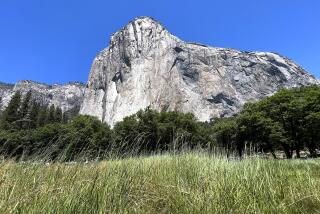That Buzzing Isn’t the Bees
- Share via
With a Dec. 31 deadline looming like runway lights, the Federal Aviation Administration should accelerate efforts to comply with a 1986 law and a recent presidential order to reduce the noise of tourist flights over the nation’s most popular parks.
Grand Canyon National Park has perhaps the most acute problem. The buzz of aircraft over the spectacular chasm, in one of the most visited U.S. parks, has grown steadily worse in recent years. In 1994, air tour operators reportedly flew 800,000 visitors over the park; that translates to a flight every two minutes in some areas of the canyon. That sort of racket is hardly conducive to the stillness and solitude that draw backpackers, hikers and daydreamers.
Congress directed the FAA and the National Parks Service in 1986 to put rules in place requiring “substantial restoration of the natural quiet and experience” of the parks. But lack of progress prompted President Clinton, on Earth Day this year, to issue an executive order setting the December deadline for an immediate reduction in noise. The proposed rules now on the table do not appear to do that. They lack the teeth to compel tour operators to fly more quietly or less frequently.
The tour companies legitimately argue that they make the canyon accessible to those unable to hike its trails and reach its lookouts. This trade-off, availability versus serenity, is increasingly a center of controversy at national parks across the country, one that is fueled by the growth in visitors, vehicle traffic and, at Grand Canyon and other parks along the Colorado River plateau, air tours. A better balancing of interests can be achieved.
More to Read
Sign up for The Wild
We’ll help you find the best places to hike, bike and run, as well as the perfect silent spots for meditation and yoga.
You may occasionally receive promotional content from the Los Angeles Times.






